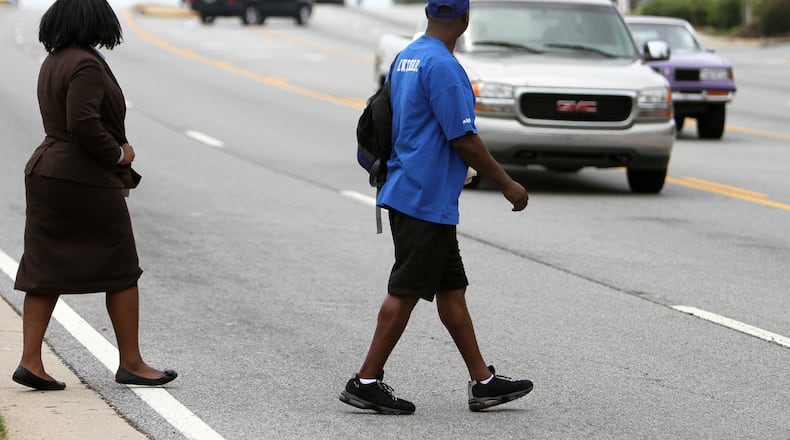Pedestrian traffic fatalities in Georgia jumped by nearly one-third in the first half of last year, far outpacing the increase nationally, a new study shows.
More than 130 pedestrians died on Georgia roads in the first six months of 2018, according to the Governors Highway Safety Association, a national group that studies traffic safety issues. That’s up 32 percent from the first half of 2017.
Nationally, pedestrian fatalities rose just 3 percent in the first half of last year, according to the GHSA.
It’s not clear why pedestrian deaths are rising faster in Georgia, though the state’s booming economy and rising population may mean more cars are on the road — increasing the chance of drivers colliding with pedestrians.
But the safety association’s report makes it clear that — in Georgia and across the nation — pedestrians are in growing peril.
“The alarm bells continue to sound on this issue,” GHSA Executive Director Jonathan Adkins said in a statement announcing the report. “It’s clear we need to fortify our collective efforts to protect pedestrians and reverse the trend.”
GHSA researchers studied pedestrian fatalities in all 50 states and the District of Columbia. Among their findings:
- Nationwide, pedestrian fatalities rose 35 percent from 2008 to 2017, when 5,977 people died. But the combined number of all other traffic fatalities fell 6 percent during the same period. As a result, pedestrian deaths account for a growing share of traffic fatalities — 16 percent in 2017.
- In the first six months of 2018, only nine states saw fatalities rise faster than Georgia — most of them largely rural states or those with significantly smaller populations than Georgia.
The study found a variety of factors have led to more pedestrian deaths in recent years — many of them beyond the control of state and local traffic safety officials. Economic conditions, population growth, demographic changes, weather, fuel prices, vehicle miles traveled and the amount of time people spend walking — especially at night — all have contributed to changes in pedestrian deaths.
Other factors include the rise of distracting smartphones and the growing popularity of light trucks and SUVs, which can inflict more damage on human bodies than passenger cars.
Richard Retting, the GHSA consultant who co-wrote the report, told The Atlanta Journal-Constitution that the rapid growth of Atlanta and its suburbs likely was a contributing factor in Georgia’s pedestrian fatality spike. He said fast-growing suburban areas can be especially dangerous to pedestrians.
Unlike downtowns, where traffic speeds tend to be slow and drivers expect to see pedestrians, suburban drivers often aren’t watching for people crossing the road, “and people can be going 40 to 50 mph.”
“The suburban environment is not well designed for pedestrians,” Retting said.
The rise in pedestrian fatalities comes as overall traffic fatalities in Georgia are declining — thanks, in part, experts say, to the state's new distracted driving law.
The GHSA report said it will take a combination of better traffic enforcement, road design, driver education and emergency medical response to stem the tide of pedestrian deaths. And though Georgia has outpaced many states in fatalities, the report singled out the state’s efforts to address the problem through educational grants and building crosswalks with audible directions and countdowns.
About the Author
Keep Reading
The Latest
Featured



